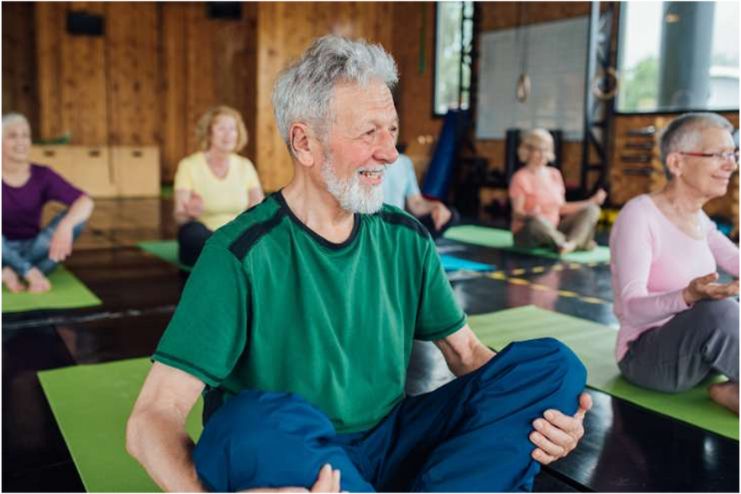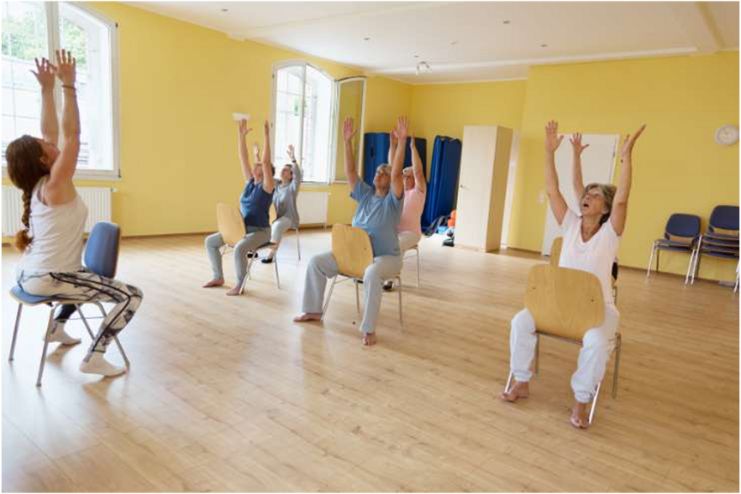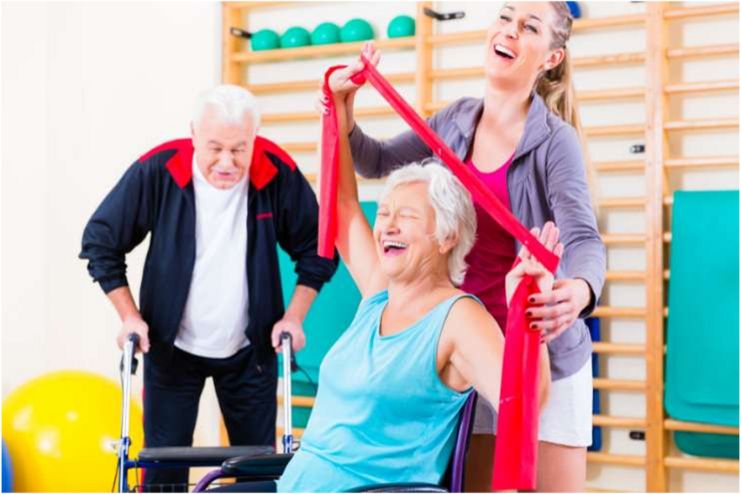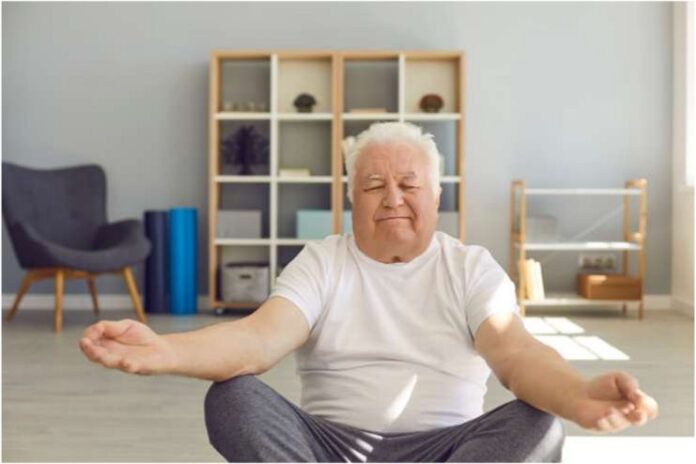Affiliate Disclaimer
Some links in this article are affiliate links. We may earn a small commission if you make a purchase through these links, at no extra cost to you. We only recommend products we find useful to our readersAs we age, our bodies and minds need extra attention to be balanced and vibrant. For seniors, yoga and meditation provide a mild and approachable route to general well-being. Frequently seen as straightforward yet profound, these routines promote mental and emotional well-being and physical health.
The slow, deliberate motions of yoga help maintain balance, strength, and flexibility, while meditation offers a much-needed mental haven that lowers stress and promotes inner silence. Seniors can connect with themselves via yoga and meditation, revitalizing their bodies and soothing their minds for a healthier existence.
Related Articles: Breaking Down the Benefits: 6 Reasons Why Yoga Is Taking Over Fitness
Understanding Yoga and Meditation for Seniors

1: Benefits of Yoga for Seniors
It might be difficult for seniors to maintain an active lifestyle as they age. However, physical health and exercise are vital for everyone, regardless of age. By recommending exercise regimens that involve mild motions, caregivers can assist elders in maintaining an active and healthy lifestyle. Yoga, a mind-body exercise emphasizing posture and breathing methods, is one such activity.
Some elders may consider yoga a New Age activity for women in their 20s and 30s. However, the National Institute on Aging at NIH reports that experts are investigating how yoga can be a very safe and gentle way to improve the health of older people.
Since anyone can do yoga with different capacities and levels of mobility, it can be an excellent approach for seniors to exercise and achieve wellness.
Stronger Bones: Yoga for elders can avoid osteoporosis, which results in weak or brittle bones. Osteoporosis develops when the production of new bone cannot keep up with the aging-related loss of bone mass and density.
Sleep Better: Sleeplessness is a common problem among seniors and can worsen other medical disorders. Seniors who practice yoga may be able to fall asleep more quickly and have better-quality sleep throughout the night.
Reduced Stress: People typically practice yoga in a serene setting. It implies that yoga can calm the body during stressful situations and even stop the fight-or-flight reaction.
Reduce the Chance of Developing Depression: Yoga is a mood enhancer; movement, breathing, and meditation can all contribute to a feeling of general well-being. It also helps maintain your social life because it is practiced in a group environment with your peers.
Being Mindful: Stress reduction and mindfulness are beneficial for seniors who are beginning to experience dementia, are in the process of relocating to a nursing home, or are simply adjusting to new daily routines brought on by aging. In a yoga class, students learn to recognize their thoughts and feelings.
2: Meditation’s Role in Senior Health
Meditation provides a mental haven for seniors dealing with aging challenges. Stress reduction is among its most potent advantages. Life’s relational, emotional, or physical obstacles can cause mental stress as we age.
The National Center for Complementary and Integrative Health (NCCIH) highlights several studies demonstrating the benefits of meditation for mental and physical health.
Meditation’s emotional and cognitive benefits can make it more effective for older persons. Meditation might be an excellent addition if you’re searching for a fresh approach to self-care or enhancing your mental well-being.
Older people deal with particular challenges, like feeling more loss and loneliness and seeing their social support system decrease as they lose loved ones. Frequent meditation enhances concentration, focus, memory, and attention. Even if meditating once might not significantly impact one’s health, integrating meditation into one’s daily practice can have long-term positive effects.
Related Articles: 8 Surprising Benefits of Laughter Yoga
Adapting Practices for Seniors

3: Senior-Friendly Yoga Practices
Yoga can be a life-changing activity for seniors, but it is important to adjust it to the body’s evolving demands. Thanks to easy and gentle yoga practices, seniors can benefit from yoga without putting undue strain on their joints or muscles.
Mountain Pose: In the mountain position, the legs, ankles, and foot arches are strengthened and stretched. If you are having trouble with the posture, you can do it close to a wall if you lose your balance. You can raise your arms by your head for a more challenging exercise.
Warrior I Stance: This pose helps with posture and balance and strengthens the muscles in the calves, thighs, ankles, and feet. To make the posture easier, you don’t have to press the back foot down fully. Instead, place the heel against a sturdy blanket or sandbag. If you’re up for the task, try maintaining the stance for more time.
Knee-to-Chest Standing Pose: The standing knee-to-chest pose strengthens the legs, hips, and core. To make it easier, sit upright in a chair with both feet on the ground. Take a breath and raise the leg. Raise the knee above hip height to make the pose more challenging.
4: Tailoring Meditation for Seniors
For seniors, meditation can be a very effective strategy for reducing chronic pain, anxiety, and everyday stress. However, for the technique to be beneficial, it must be adjusted to older individuals’ specific needs. Here are some practical meditation methods to assist seniors begin their meditation journey:
Meditation with Mindfulness: Mindfulness meditation involves bringing attention to the present moment. Seniors can engage in mindfulness meditation by locating a peaceful, comfortable area, sitting comfortably, and concentrating on their breath or a selected anchor, like a word or a feeling.
During mindfulness meditation, seniors are encouraged to observe their thoughts and feelings without passing judgment, which helps them become more self-aware and find inner peace.
Deep Breathing Meditation: This is a great place to start for seniors because breathing is a crucial meditation component. Pay attention to your breathing, taking deep, calm breaths and similarly controlled exhalations. Gently return your focus to the breath as thoughts come and go.
Meditation with Loving-Kindness: The goal of loving-kindness meditation, sometimes referred to as metta meditation, is to develop compassion, love, and goodwill toward oneself and other people. Seniors can start by quietly and calmly repeating words or greetings for themselves, their loved ones, and even people they may find challenging.
Using Imagery to Guide Meditation: Visualizing serene situations or experiences is a component of guided imagery meditation. The emphasis on positive imagery promotes calm and relaxation. You may find many guided imagery options online, such as audio that leads you through heart-friendly, peaceful imagery.
Related Articles: 5-Minute Morning Meditation to Start Your Day Calm and Focused
Benefits Beyond Physical Health

5: Improving Emotional Health
Yoga and meditation are powerful techniques for fostering mental well-being, particularly in seniors. Their advantages go far beyond their physical ones. By promoting reflection and self-compassion, these techniques help people feel at ease and satisfied.
Yoga and meditation have been practiced for thousands of years, with roots in ancient Indian customs. By highlighting the mind-body link, these techniques support emotional stability, mental clarity, and general well-being. Modern science is uncovering the benefits of yoga and meditation, which shows how these practices positively impact the neurological system, hormone balance, and brain function.
Additionally, studies indicate that yoga and meditation may enhance executive functions, including memory, learning, reasoning, decision-making, accuracy on mental acuity tests, and response time.
Exercise can improve mood by synthesizing feel-good chemicals called endorphins, lowering stress hormone levels, and increasing oxygenated blood flow to the brain. However, yoga might have other advantages. It can influence mood by increasing gamma-aminobutyric acid (GABA), a brain chemical linked to improved mood and reduced anxiety.
Additionally, meditation lessens activity in the limbic system, the area of the brain involved in emotions. As one’s emotional sensitivity decreases, one behaves more gently towards stressful events.
The journal Aging and Mental Health published a review of 15 research that examined the impact of various relaxation techniques on anxiety and depression in older persons through meditation and yoga.
6: Enhancing Quality of Life
Yoga and meditation revitalize seniors’ lives and improve their general quality of life. These age-old practices are more than just physical activities. They help elders rediscover their inner strength and accept aging as a process of personal development and rejuvenation by creating a feeling of purpose.
Regular yoga and meditation practice energizes the body and the soul. They provide elders with a new lease on life, empowering them to take control of their health and wellness. This feeling of empowerment carries over into preserving one’s independence, which is essential to aging well.
Practicing yoga increases the likelihood of having a favorable perception of one’s physical and mental well-being by 20%, embracing qualities like strength, flexibility, mental clarity, and physical fitness.
Meditation can bring a more optimistic outlook and a better self-image. According to one study, people who practiced yoga and meditation for three months reported feeling less depressed and anxious at the end of the study.
Related Articles: Sunday Stretch: Relaxing Recovery Yoga
Conclusion
Seniors can benefit much from yoga and meditation, which nourish the body and the mind. Physically, they improve joint health, flexibility, and balance, enabling elders to maintain their independence and level of activity. These mental exercises provide a deep sense of calm and contentment by lowering stress, enhancing focus, and building emotional resilience. Combined, they offer a comprehensive approach to health that improves all facets of life.
Yoga and meditation give seniors looking for balance and vitality the tools they need to live rather than just age. Accept these habits as a starting point for a better, healthier way of living.
Related Articles: Daily Yoga Poses for Mindfulness and Strength
References
- https://pmc.ncbi.nlm.nih.gov/articles/PMC6549603/
- https://www.asccare.com/yoga-for-seniors/
- https://www.ncoa.org/older-adults/health/lifestyle/wellness-activities/meditation/
- https://www.nccih.nih.gov/health/meditation-and-mindfulness-effectiveness-and-safety
- https://www.orlandohealth.com/content-hub/older-adults-should-meditate-heres-why
- https://bluemoonseniorcounseling.com/6-benefits-of-meditation-for-seniors/
- https://www.lifeline.ca/en/resources/yoga-for-seniors/
- https://www.brettlarkin.com/yoga-for-seniors/
- https://www.livestrong.com/article/13771376-yoga-for-seniors/
- https://www.springhills.com/resources/senior-meditation-techniques
- https://www.seniorhelpers.com/ca/north-bay/resources/blogs/2024-02-15/
- https://www.health.harvard.edu/staying-healthy/yoga-for-better-mental-health
- https://www.sprucepsychiatric.com/post/how-yoga-and-meditation-can-benefit-your-mental-health
- https://momentmd.com/embracing-wellness-6-benefits-of-yoga-and-meditation-practice/
In this Article



















